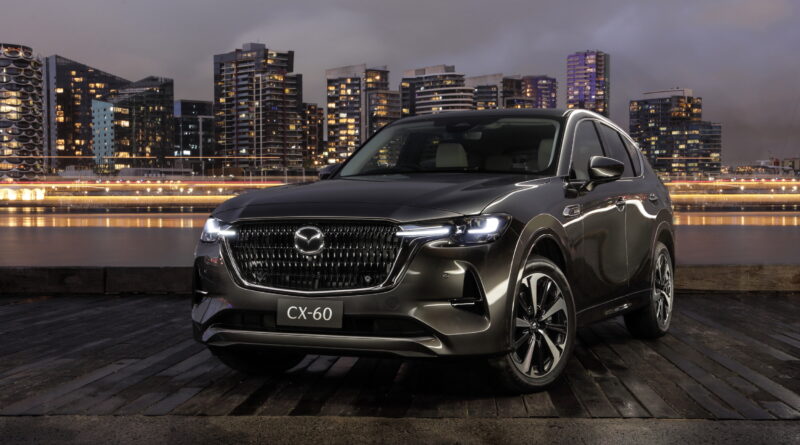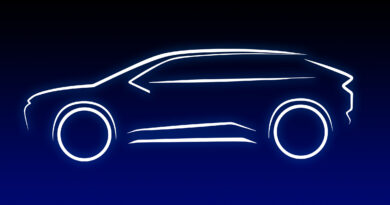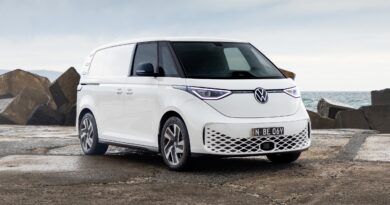Mazda CX-60 PHEV to sell from $72,300 plus on-roads
The new Mazda CX-60 plug-in hybrid EV will sell from $72,300 before on-road costs when it arrives in Australian dealerships from June 2023 – and it has its eyes on the world’s biggest luxury brands.
The first PHEV from Australia’s second biggest automotive brand attracts a $12,500 premium over the six-cylinder petrol engine that is expected to account for almost half of all sales for the new “Mazda Premium” model.
While it will be packed with features, it’s also the driver-focused layout, customisation options and premium finishes that Mazda believes will attract people to the all-new SUV.
READ MORE: Mazda CX-60 plugs in: New flagship PHEV SUV will be ‘most powerful Mazda ever’
OVERSEAS FIRST DRIVE: Mazda CX-60 PHEV
READ MORE: Mazda Australia’s embracing PHEVs, but is it too late?
Riding on a new architecture that places the engine in a north-south configuration rather than across the engine bay – in turn prioritising drive to the rear wheels – the CX-60 has hopes of tempting some buyers out of a BMW X3, Mercedes-Benz GLC or Audi Q5, while also providing a natural progression for aspirational Mazda drivers.
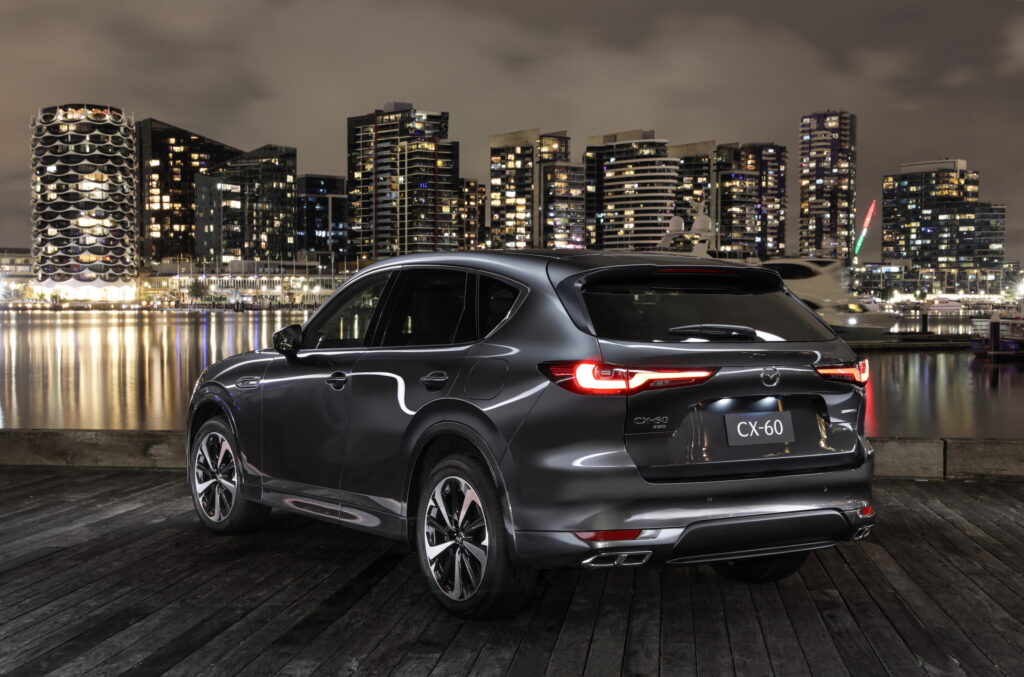
While all CX-60 models are all-wheel drive, there is a rear bias to the way the drivetrain delivers its performance, something that promises a more engaging drive.
PHEV the CX-60 hero
And it’s the PHEV that is the hero of the five-seat mid-sized SUV, which sits higher upmarket than the CX-5 it is similar in size to.
The CX-60 will also be available with new 3.3-litre inline six-cylinder turbo engines – there are petrol and diesel versions – but it’s the PHEV that is the performance and tech leader.
The CX-60 PHEV teams a 2.5-litre four-cylinder petrol engine with a 100kW electric motor.
The resulting 241kW and 500Nm makes it the most powerful road car to ever wear a Mazda badge.
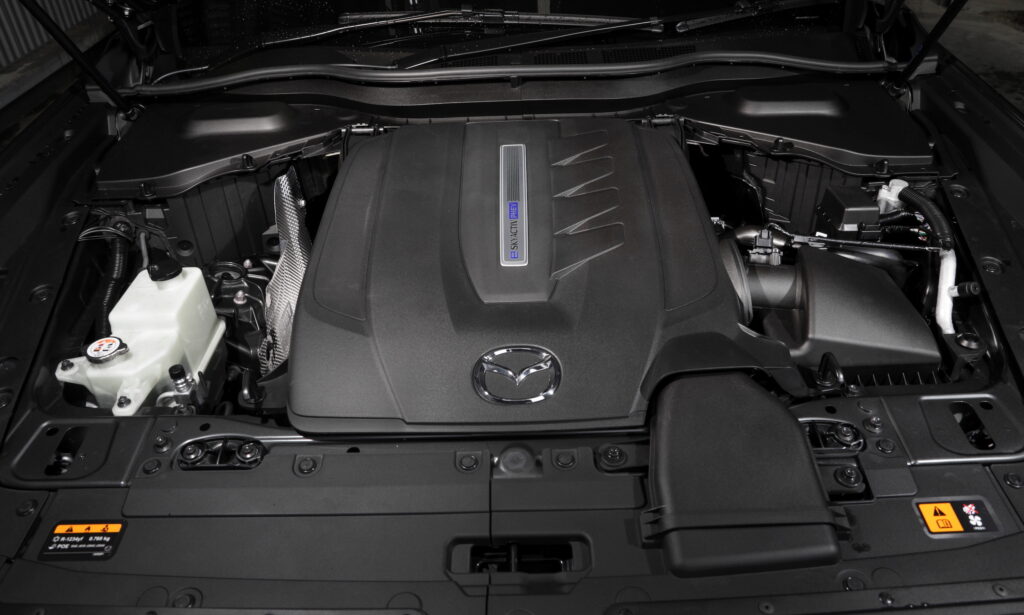
The CX-60 PHEV is claimed to take 5.9 seconds to top 100km/h.
Claimed fuel use is 2.1 litres per 100km, although like all PHEVs it will no doubt depend on how you drive it; those who are gentle on the throttle and cover less than 60km per day could easily drive around almost entirely on electricity, whereas on a longer trip it will likely use a lot more than 2.1L/100km.
A 17.8kWh lithium-ion battery is claimed to give up to 76km of range when driven at 100km/h or less. The official claimed range is 60km, which is still way more than the average daily drive.
Charging from a home powerpoint to the Type 2 plug should take about eight hours or as little as 2.5 hours using a wallbox.
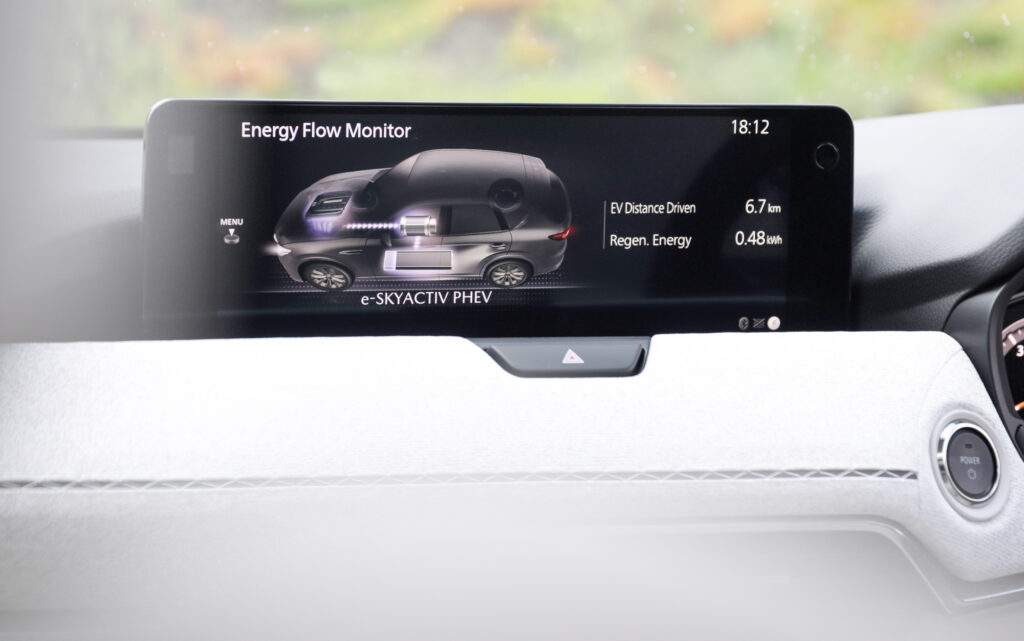
Three grades for CX-60 family
The entry-level CX-60 PHEV is known as the Evolve and comes with 18-inch alloy wheels, fake leather trim, 360-degree camera, smart key entry, dual-zone ventilation, wireless phone charger and wireless Apple CarPlay and Android Auto connectivity. There’s also a 10.25-inch infotainment screen and 12.3-inch digital instrument cluster, as well as a generous suite of safety gear that includes autonomous emergency braking and blind spot warning.
Stepping up to the CX-60 GT PHEV – priced from $80,492 before on-roads – brings real leather, panoramic sunroof, head-up display, heated front and rear seats, 20-inch wheels, a larger 12.3-inch central infotainment screen and a 12-speaker Bose sound system. There are also various trim and design tweaks as well as electric adjustment for the front seats and steering wheel. Plus it gets a facial recognition system as part of the Driver Personalisation System that can automatically restore settings for not only the seating position and mirrors but audio and other functions.
The top of the line CX-60 Azami PHEV costs $87,252 and gets a see-through view for its camera, Nappa leather, ambient lighting, ventilated front seats and various unique design elements, including a different grille.
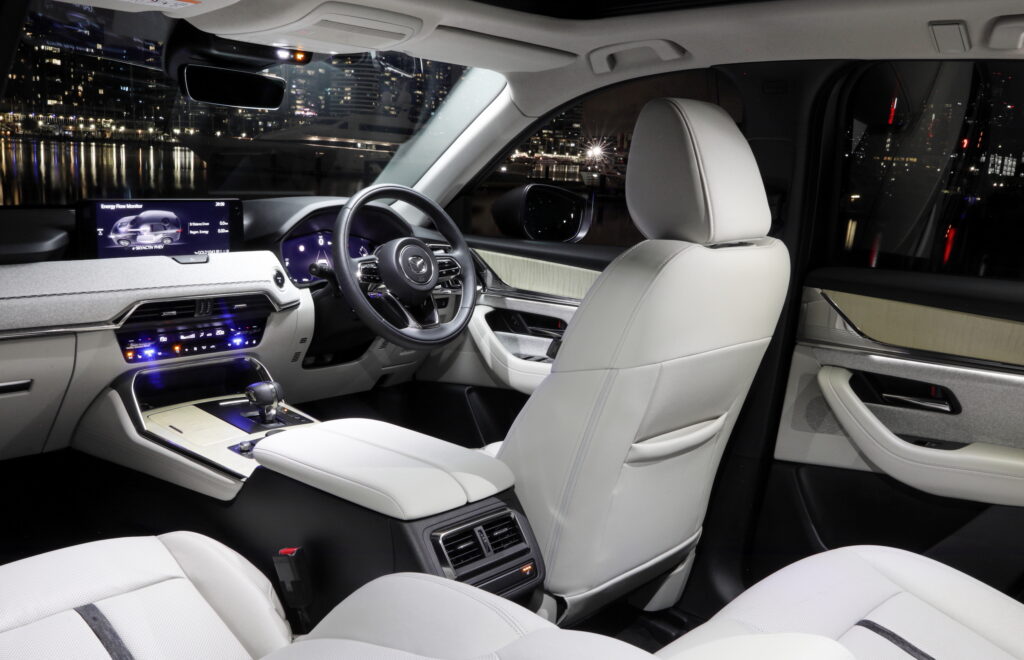
There are also various option packs, including two design-focused ones that are only available on the Azami.
The $2000 Takumi pack lightens the interior with white Nappa leather, white wood and a cloth dashboard.
The $2000 SP pack goes darker, with dark exterior highlights, a suede dashboard and tan leather trim.
Sophistication the key for CX-60
That personalisation is part of the appeal of the CX-60, according to Mazda Australia marketing director Alastair Doak.
Ultimately there’s a lot more to the CX-60 than its claim of being the first PHEV from Mazda.
It’s also an SUV trying to muscle in on the premium market dominated by big name European brands.
“We have a number of customers every year who will leave the brand as their income and other things change and they’re willing to spend more money on product,” he says.
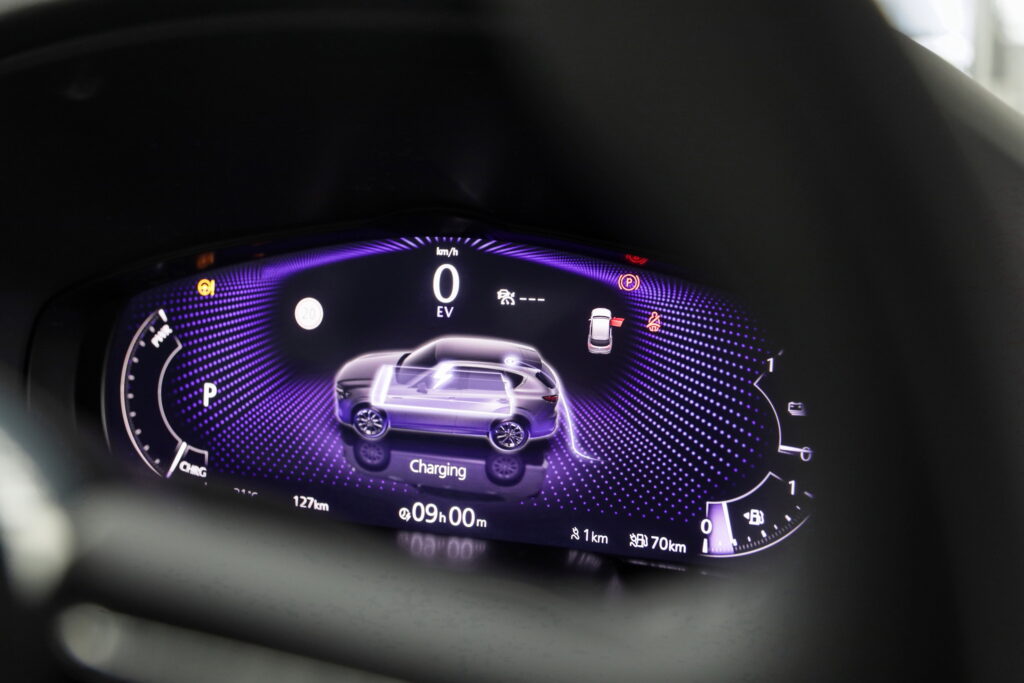
“We have a very clear option for them now.”
He also says the more spacious interior of the CX-60 will appeal, especially when compared with the Euro alternatives.
“Now we have a bigger car and also a more sophisticated car.”
At 4745mm long and 1890mm wide it is 170mm longer and 45mm wider than a Mazda CX-5, but 330mm shorter and 79mm narrower than the seven-seat CX-9.
Of course, for some the Mazda badge on the bonnet will never compete with that of a three-pointed star or the Audi rings, something the company acknowledges.
But it says it is well positioned to fill the space between mainstream brands and prestige ones.
“When you actually do the comparison on value at these price points then we still have a traditional Mazda value story to tell – as well as having the spec and features and sophistication that you need as a ticket of entry,” says Doak.
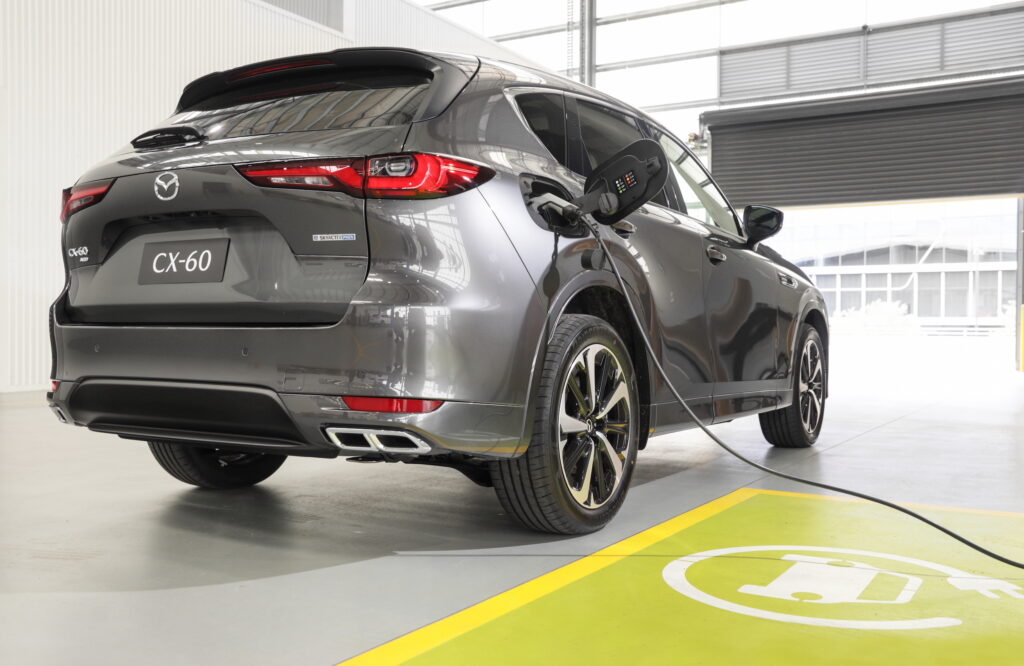
The big question is whether Australians want plug-in hybrids.
As with the rest of the world, the big growth in the EV market has been with pure battery electric vehicles.
PHEVs still have many compromises – such as reduced performance when running on electricity and higher servicing costs – and are often more expensive than an equivalent EV.
Either way, Mazda is expecting more success than it had with the MX-30 Electric, which struggled to sell 100 in Australia.
Mazda is planning to sell around 6500 CX-60s annually in Australia but is expecting only around 20 percent of those – 1300 – to be the PHEV.
To put that in perspective, Tesla sold 6452 Model Ys (read about the Tesla Model Y becoming the top selling EV in Australia for one month) in its first three months on sale and Volvo is planning on selling about 1500 C40s in 2023 and 3500 XC40 Pure Electrics.

